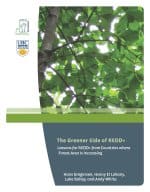Date: July 6, 2011
In the last decade, countries have committed major resources to reducing carbon emissions from deforestation and forest degradation in developing countries (REDD). A debate continues on how REDD financing should include related activities, such as the enhancement of carbon stocks through afforestation, reforestation and rehabilitation of degraded lands. Meanwhile, several countries have added to their net forest area with little fanfare or donor funding.This paper assesses the factors that underpin the transition from net deforesters to net forest growers in China, South Korea, Vietnam, India and Chile. The authors review the literature on forest policy processes and government-led reforestation and restoration programs, and find their success relied on government support at the highest levels, and forest governance reforms (particularly land and resourcetenure systems) to incentivize good forest management and tree-planting. However, constraints to wood supply have caused some countries to rely on wood imports and “export” deforestation, diminishing globalcarbon benefits.The authors argue that the experiences of these reforesting countries carry implications for current REDD countries. Reforestation programs appear to have a clearer benefit for the rural poor in forest areas than REDD programs. However, both depend on improvements to forest governance and forest tenure. Major reforestation activities must be included to effectively confront leakage and additionality issues inherent in REDD. In sum, while debates on REDD implementation continue at the international level, the authors conclude that improving forest stocks is a necessary complement to successful REDD and recommend that national policymakers focus serious effort on these activities.

